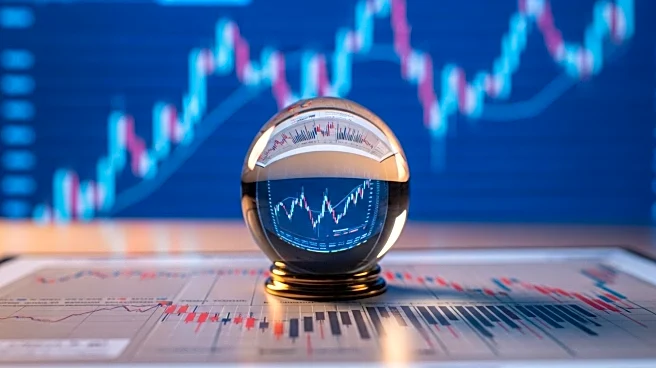What's Happening?
Market strategists are increasingly recommending a barbell portfolio strategy to investors amid growing concerns about a potential bubble in AI-related stocks. This strategy involves balancing high-risk and low-risk assets to protect against market volatility. The S&P 500 has seen significant gains driven by growth stocks, prompting experts to suggest diversifying portfolios with a mix of growth and cyclical stocks. Notable figures like Ruchir Sharma and David Rosenberg have advocated for variations of the barbell approach, emphasizing the importance of hedging against speculative investments.
Why It's Important?
The recommendation of a barbell portfolio is significant as it addresses the risks associated with the current stock market dynamics, particularly the high valuations of AI-related stocks. Investors stand to benefit from this strategy by mitigating potential losses from a market correction. The emphasis on diversification highlights the need for caution in an environment where speculation and high valuations could lead to instability. This approach could influence investment strategies across the U.S., impacting financial markets and investor behavior.
What's Next?
As concerns about an AI bubble persist, investors may increasingly adopt barbell portfolios to safeguard their investments. Financial institutions and advisors are likely to continue promoting diversified strategies to navigate potential market fluctuations. The ongoing dialogue around AI and stock market bubbles may lead to further scrutiny and adjustments in investment practices, potentially affecting stock valuations and market trends.
Beyond the Headlines
The focus on barbell portfolios underscores broader economic concerns about speculative bubbles and the sustainability of current market trends. This development may prompt discussions on the ethical implications of investment strategies that prioritize short-term gains over long-term stability. Additionally, the emphasis on diversification could lead to shifts in how investors perceive risk and value in the stock market.











